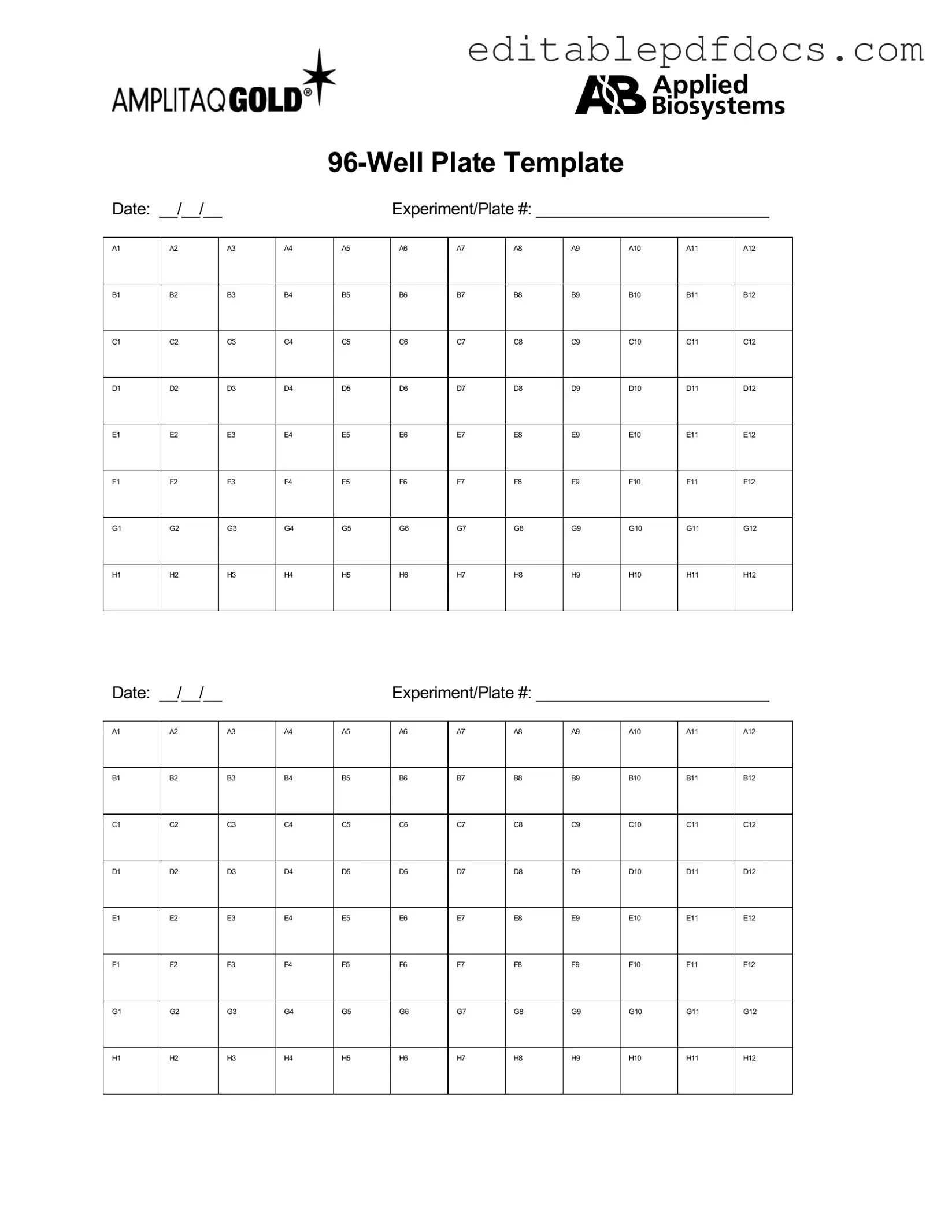Fill a Valid 96 Well Template
The 96 Well form is a standardized document used primarily in laboratory settings to organize and record data from experiments conducted in a 96-well plate format. This form helps streamline data collection and analysis, ensuring that researchers can efficiently track their findings. If you're ready to simplify your research process, consider filling out the form by clicking the button below.
Open Editor Now
